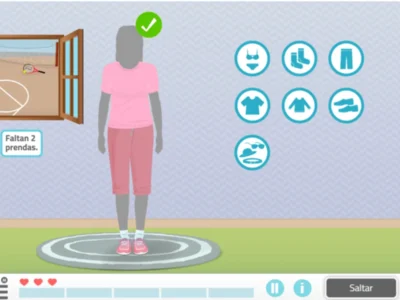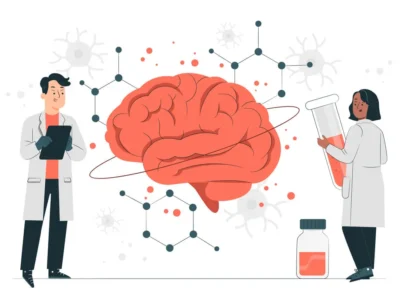ADHD and ASD are two different disorders, but they can often occur together in some cases (comorbidity). In this article, cognitive rehabilitation specialist and educational psychologist Samuel Rodríguez explains the differences between ADHD and ASD, how these disorders are related, their symptoms, and how they can be treated.
What do we mean by ADHD and ASD?
Both ADHD (Attention Deficit Hyperactivity Disorder) and ASD (Autism Spectrum Disorder) are conceptualized by the DSM (Diagnostic and Statistical Manual of Mental Disorders) as neurodevelopmental disorders.
In the case of ADHD we are dealing with a behavioral disorder characterized by excessive activity, impulsivity, and difficulty concentrating.
On the other hand, ASD is a developmental disorder that affects communication, social interaction, and behavior.
Although they are different disorders, they can occur together in some cases (comorbidity) and affect the development and quality of life of the people who have them.
How are these disorders diagnosed?
Both ADHD and ASD are disorders that are diagnosed through observation of the person’s symptoms and behavior.
In the case of ADHD, questionnaires and neuropsychological tests are used to assess activity, impulsivity, and attention capacity.
In the case of ASD, specific tests are used to evaluate communication, social interaction, and repetitive behavior.
It is important that the diagnosis is made by a health professional trained in the subject because they must always assess the boundaries (differential diagnosis) between these disorders or the coexistence between them (comorbid diagnosis).
The high rates of coexistence between the two disorders lead us to think that if we limit the diagnosis only to ADHD, for example, there will be a high probability of overlooking other problems, sometimes as or even more important than ADHD itself.
On the other hand, if we only pay attention to the more severe psychiatric disorder (for example, ASD) and interpret ADHD symptomatology as merely illustrative of that disorder, we can again make a diagnostic error or misdirect treatment and/or the information provided to families, teachers…
Where should we start working?
The diagnosis between ASD and ADHD may seem complicated, but it will serve to establish a starting point, a way to approach what is happening and see where to start working.
On one hand, we could think of it in the following way:
In borderline cases between ADHD and ASD (in which there are serious difficulties in directing intervention and the information provided to families), insofar as the full criteria for the more severe disorder are not met (in this case ASD), it will be preferable to retain the diagnosis of ADHD (highlighting the ‘autistic’ symptoms) and keep in mind in the neuropsychopedagogical intervention all aspects related to social skills.
On the other hand, we could also address the issue from the existence of both diagnostic conditions in the same subject (comorbidity). This could allow rationalizing treatment, for example medically, recommending methylphenidate to a child with a diagnosis of autism if they exhibited the typical manifestations of ADHD.
What symptoms are common between ADHD and ASD?
As we mentioned earlier (although there are some similarities between the symptoms of ADHD and ASD), there are differences between ADHD and ASD. Both require a specific treatment approach separate from what is more core.
While in ADHD the target elements would revolve around behavioral self-regulation, the maintenance and focus of attention, in the case of the ASD population, the issue of communication and relationships will be primary.
In some comorbid ASD/ADHD cases pragmatic language impairment and cognitive flexibility deficits may also be observed, making an intervention focused on improving executive functioning appropriate in both cases.
If we reflect on the different neuropsychological functions and the special involvement of the executive system in the cognitive structures of ADHD, the proximity and overlap that may exist with other neurodevelopmental disorders become evident (this makes detection difficult).
If we look globally at the various functions attributed to the frontal lobe, we will observe interpretations for various symptoms, not only of ADHD, but of ASD and other developmental disorders also linked to these regions.
This undoubtedly leads us to the diagnostic complexity and the presence of comorbidity.
ADHD is determined by the interdependent conjunction of various executive dysfunctions, the result of which explains the symptoms of the disorder.
However, we will say that these functions are by no means exclusive to ADHD, since they can also be present in ASD and in other neurodevelopmental disorders.
How are these disorders treated?
Treatment for ADHD and ASD varies according to each person’s individual needs. In the case of ADHD, stimulant medications and behavioral therapy can be effective.
For autism, behavioral and occupational therapy, as well as medications to treat specific symptoms, can also be useful.
While ADHD may present problems in areas of inhibition and working memory, children with ASD may in turn show greater cognitive rigidity and planning difficulties, which is the point at which working on executive function is possible and recommended.
Lezak defines executive functions as the essential cognitive capacities to carry out effective, creative, and socially accepted behavior.
Research in recent years (not only in ASD, but also in other disorders such as ADHD) has been mainly aimed at evaluating those capacities that supposedly integrate executive functioning. Among them are: Planning, Flexibility, Working memory, Monitoring, Inhibition.
Neuropsychopedagogical intervention of executive functioning in ASD and ADHD?
We define Neuropsychopedagogical intervention as the interdisciplinary practice/work with information processing and the modularity of the mind in terms of: cognitive neuroscience, psychology, pedagogy, and education. It is carried out by a professional with multi-disciplinary training and with reeducational and/or educational purposes.
Executive functions are mediated by the frontal lobe; any anomaly/circumstance in neurodevelopment that may present with frontal involvement (such as in ADHD or ASD) and that affects this area will likely be associated with executive dysfunction.
Thus we see how executive dysfunction can appear both in attention deficit hyperactivity disorder (ADHD) and in autism spectrum disorder (ASD), among others. ADHD and ASD (always attending to individual needs and cases) can benefit from neuropsychopedagogical intervention work focused on developing executive function competence.
People with ASD may present frontal involvement leading to a clinical picture characterized by inflexibility, difficulty making decisions, difficulties with planning and organization, difficulty inhibiting incorrect responses, and a limited capacity for conflict resolution.
In that scenario, executive treatment will undoubtedly be a necessity. Likewise, the executive case profile in ADHD, referred to in terms of planning, working memory, impulse control, inhibition, initiation, and the monitoring of tasks or actions, also appear as core executive elements in the intervention with a person with ADHD.
Conclusion
We have reviewed similarities and differences between ADHD and ASD, diagnosis, comorbidity, symptomatic constellation, behavioral neuroanatomy, executive functioning… and finally we can conclude that people with ASD/ADHD (always according to their individual conditions/needs) can benefit from a neuropsychopedagogical treatment focused on improving executive functions.
Main similarities and differences between ADHD and ASD
1. What is the difference between ADHD and ASD?
ADHD is a neurodevelopmental disorder with hyperactivity, impulsivity, and attention deficit. ASD affects communication, social interaction, and repetitive behaviors. They are different, but they can coexist in the same person.
2. Can there be comorbidity between ADHD and ASD?
Yes. ADHD-ASD comorbidity is common. It requires a comprehensive evaluation to distinguish overlaps, avoid false differential diagnoses, and adjust clinical, educational, and family interventions to real needs.
3. How are ADHD and ASD diagnosed?
The diagnosis is made by qualified healthcare personnel through clinical observation, clinical interviews, questionnaires, and neuropsychological tests. In ASD, specific tools for communication and interaction are used. Differential diagnosis and possible comorbidity must be assessed.
4. What symptoms do ADHD and ASD share?
There may be overlapping difficulties in executive functions: planning, flexibility, working memory, monitoring, and inhibition. Cognitive rigidity and pragmatic language alterations are also observed, especially in comorbid cases.
5. What is the treatment for ADHD and ASD?
ADHD is usually treated with psychoeducation, behavioral therapy, and stimulant medications. In ASD, behavioral and occupational interventions are prioritized; medication may be added for specific symptoms. The plan should be individualized and multidisciplinary.
6. What is neuropsychopedagogical intervention in ADHD and ASD?
It is an interdisciplinary approach (neuroscience, psychology, pedagogy, and education) focused on improving executive functions mediated by the frontal lobe: attention, planning, inhibitory control, and self-regulation. It benefits ADHD and ASD according to individual needs.
If you enjoyed this article about educational inclusion and how to work on it with NeuronUP, you may also be interested in the following articles:
“This article has been translated. Link to the original article in Spanish:”
Diferencias entre TDA-H y TEA: Comprendiendo dos trastornos del neurodesarrollo







 Neurodevelopment: Disorders, Comorbidity, and Pediatric Neuropsychology
Neurodevelopment: Disorders, Comorbidity, and Pediatric Neuropsychology
Leave a Reply